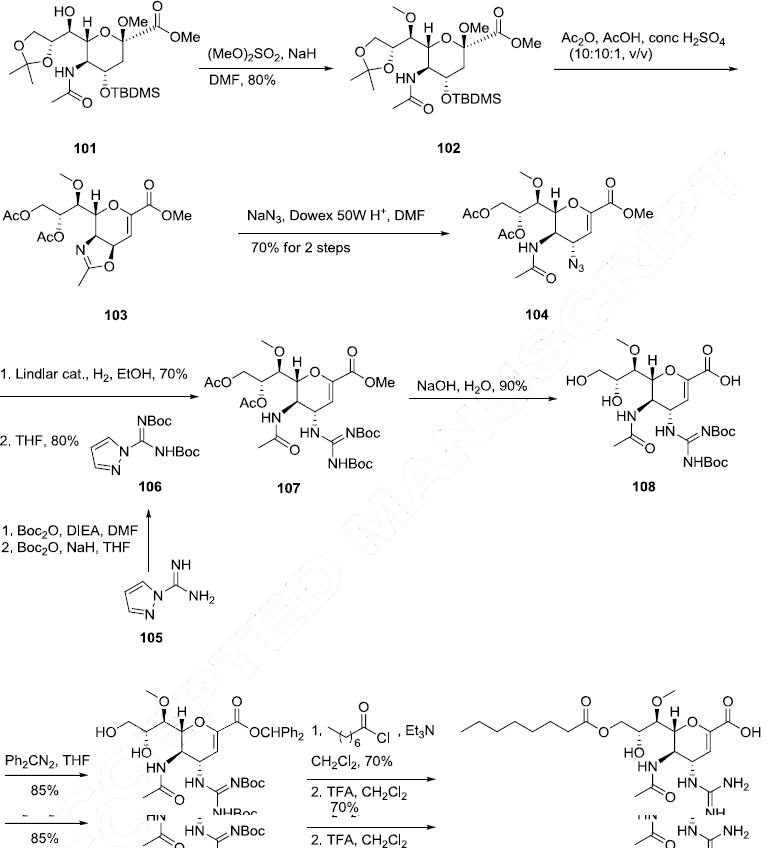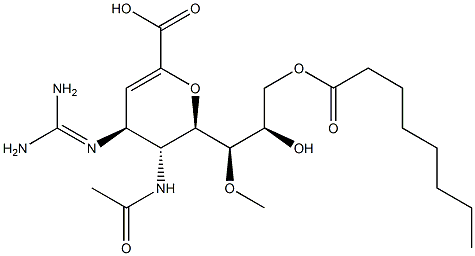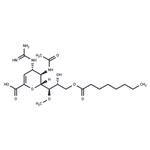The synthesis of laninamivir octanoate began with the well-documented
sugar intermediate 101. Alcohol 101 was alkylated with dimethyl sulfate in the
presence of NaH in DMF to give methyl ether 102 in 80% yield. Acetonide 102 was then deprotected
and subsequently acylated with Ac2O, AcOH, and H2SO4 (10:10:1, v/v) which resulted in
oxazoline formation along with elimination of the methoxy functionality to furnish |�|?-unsaturated
ester 103. Exposure of oxazoline 103 to NaN3 in the presence of Dowex 50W/H+ produced the transamidoazide
104 in 70% yield over two steps. Azide 104 was then subjected to guanidine formation
conditions utilizing N,N-bis(tertbutoxycarbonyl)-1H-pyrazole-1-carboxyamidine (106), which was
prepared from pyrazole-1-carboxamidine (105) by consecutive protection of the amidine nitrogens, first
by treatment with Boc anhydride and diisopropylethyl amine (DIEA) in DMF, and then subsequent
treatment to Boc anhydride in the presence of NaH in THF to give 107 in 80% yield. The protected
guanidine 107 was hydrolyzed under basic conditions to give the corresponding acid 108 in good yield.
Acid 108 was esterified with diphenyl diazomethane in THF to provide 109 in 85% yield. Finally,
the primary alcohol within diol 109 was selectively acylated with octanoyl chloride in the presence of
TEA, followed by de-protection with TFA in CH2Cl2 to give laninamivir octanote (VIII) in 70% yield.





